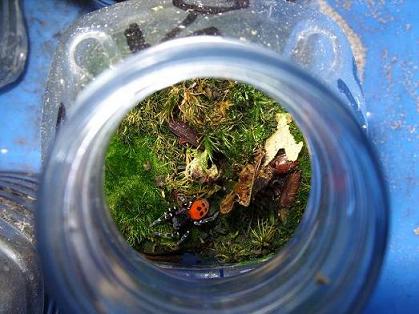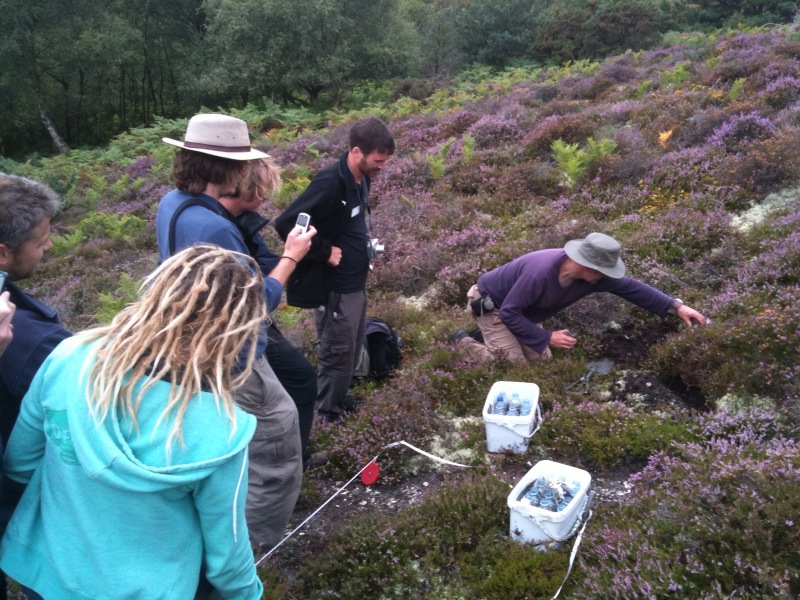![By Gábor Kovács, István Prazsák, János Eichardt, Gábor Vári, Henrik Gyurkovics [CC BY 3.0 (http://creativecommons.org/licenses/by/3.0)], via Wikimedia Commons](https://markavery.info/wp-content/uploads/2015/12/Eresus_kollari_male_Kéleshalom_Hungary.jpg)
More than four years later it’s good to hear that this project is going well. Surveys show that the spiders are expanding outside of the original release areas.
Toby Branston, RSPB Dorset Reserve Ecology Manager said: ‘It’s great to see this incredible little spider doing well in its new home. The hard work has started to pay off. Searches this year have found five new webs away from the release sites as well as others in their original ‘bottle-homes’. A great sign that the spiders are feeling settled here at Arne.‘.

During the original translocation, an ingenious low-tech method of transferring the spiders was used. Empty plastic mineral water bottles are an ideal shape and size for the spiders to make their nests in. The bottles were filled with heather and moss and captured spiders from the donor site were placed inside and monitored while they settled in and made a web. The bottles were then buried in holes in the ground so that the spiders could colonise the nearby area. I watched some of this going on in August 2011.
The RSPB Arne nature reserve has over 250 species of spider and hundreds of insects including the threatened Silver-studded Blue butterfly, and the Purbeck Mason Wasp which is only found in Dorset.
For many years it was believed that Ladybird Spiders were extinct in the UK but a small colony was discovered clinging on at one site in the 1980s. This heathland specialist has suffered over the years from the loss of much of heathland habitat to agriculture, commercial forestry and development.
[registration_form]

The Ladybird spider is a great success story, it may not be as publicly accessible as Great crested grebes or Red kites, but it is a species that we have managed to pull back from a human made brink. Yes we can!
More on it here – https://www.buglife.org.uk/campaigns-and-our-work/ladybird-spider
NE withdrew funding for the scheme a few years ago and Buglife has stepped in to fund and raise funds, planning to go to HLF for assistance next, but if you want to contribute you can do so here:
https://www.buglife.org.uk/donate-help-save-ladybird-spider
P.S. I think your main photo is one of the similar non-UK species – Eresus kollari – more red on the legs than our ones.
Matt – thank you. I think you are right on the photo – you are an expert and I am hopeless on invertebrates! But it’s pretty so I’ll leave it!
A good news story all round, with a nifty bit of re-purposing of some single use plastic bottles.
A great project and true that NE pulled the plug on funding but it would be good to acknowledge the efforts originally put in by local NE staff both in terms of direct involvement and expertise. Not only that the heathland areas that were/have been restored in and around not just the spider site but across Dorset have been as much down to the hard work of NE, FC staff as well as the NGOs in very successful partnerships for a long time.
I remember someone from Buglife some years ago telling us Birkbeck College students about a woman turning her entire home into a sanctuary for ladybird spiders to help get breeding numbers up. She wasn’t an ‘expert’ but someone inspired by the plight of this little beauty. Absolutely inspiring!